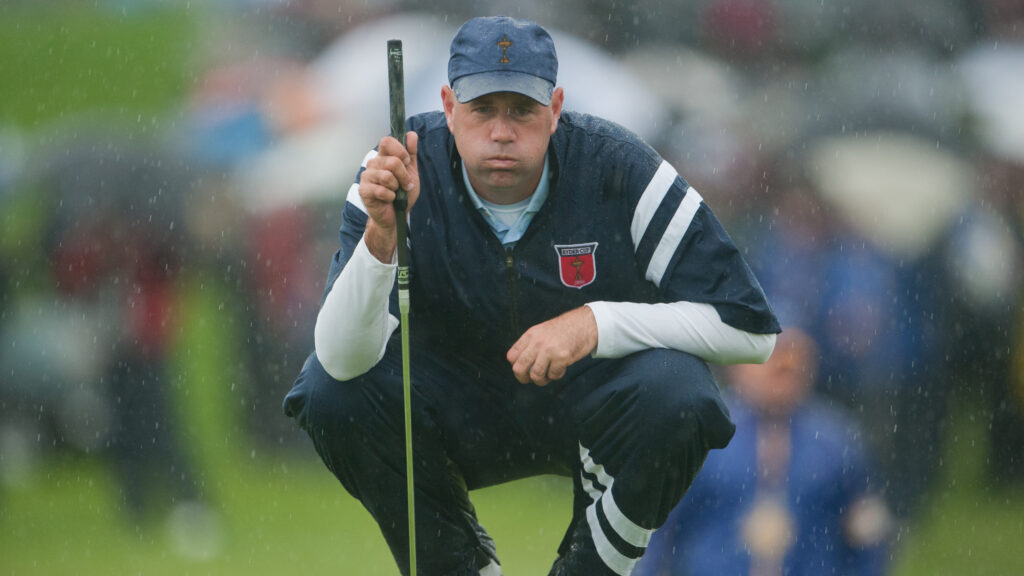The 2010 Ryder Cup: A Historic Clash at Celtic Manor
The 2010 Ryder Cup at Celtic Manor, Wales, is etched in history not just for its competitive spirit but also for the chaotic circumstances that surrounded it, including unexpected weather challenges. The highly anticipated event was impacted by relentless rain, leading to play being suspended on two occasions and ultimately extending into a Monday finish. This unique scenario added to the drama and tension of one of the most significant tournaments in golf.
A Rain-Soaked Weekend
From its inception, the 2010 Ryder Cup presented an unpredictable atmosphere. As players prepared for the opening matches, the weather took a notorious turn for the worse. The event kicked off with an embarrassing blunder: US captain Corey Pavin forgot to introduce Stewart Cink during the Opening Ceremony, a slip that added to the tension among the American squad. However, the team was soon more concerned with their ability to stay dry, as their inadequate clothing barely stood up to the British downpour that greeted them.
In the opening four-ball session, torrential rain forced play to halt, and many Players from the US team found themselves thoroughly soaked, prompting officials to seek out replacement waterproof gear. The US Team even spent over £4,000 on new jackets and trousers, revealing deep-seated logistical issues within the team’s preparation.
Under Pressure: The Waterproof Dilemma
The malfunction of the official team gear was a PR nightmare for the official supplier, Sun Mountain. The failure of the rain suits to keep the players dry cast a shadow over the team’s collective morale. PGA spokesman Julius Mason commented on the situation, highlighting how despite having Ryder Cup logos, the apparel felt inadequate. This poor performance not only reflected poorly on Sun Mountain but also raised questions about the design decisions made, particularly as Pavin’s wife, Lisa, was involved in creating the original rainwear.
Rick Reimers, the president of Sun Mountain Sports, attempted to explain the technical failures of the gear. He spoke about how heavy rain and high winds could lead to a phenomenon dubbed “wetted out,” where the fabric would no longer shed water properly. Although this technical jab at their gear provided a bit of insight, it did little to soothe growing frustrations among players.
Criticisms and Controversies
Former Ryder Cup star Paul Lawrie expressed disbelief over the oversight with the waterproofs, suggesting that such garments should have been rigorously tested before being worn at an event of this caliber. Similarly, Tiger Woods was reportedly unhappy that players were required to don the subpar rain jackets instead of their personal apparel—this, amidst a series of setbacks that were deemed avoidable if proper preparations had been in place.
Despite these hiccups, the US managed to edge the opening session 2.5-1.5, suggesting that the damp atmosphere might not have detrimented their overall performance as much as expected. However, the challenges were far from over as they faced an uphill battle in the upcoming rounds.
The Fightback Begins
As the tournament progressed, the US team found themselves in a precarious position. After a promising start, they fell behind Europe by 6-4 after the first round of revised matches. Yet, in a twist of fate, hope surged again for the Americans during the singles session, despite entering it trailing by three points (9.5-6.5). Led by Graeme McDowell, who would ultimately participate in the defining match against Hunter Mahan, the contest was on a knife’s edge.
McDowell’s match against Mahan turned out to be the most crucial. With the championship intricately hanging in the balance, McDowell displayed exceptional grit and determination. Ultimately, he emerged victorious—3 & 1—securing a cherished victory for Team Europe, giving them a total match score of 14.5-13.5 and reclaiming the Ryder Cup trophy.
A Heartfelt Conclusion
In the end, the outcome of the 2010 Ryder Cup became a testament to resilience. The US team’s struggle to adapt to their rainy conditions, fluctuating spirits, and morale was visible throughout the event. Yet the spirit of competition kept the players engaged, resulting in a closer finish than many anticipated. The chance to witness such high-stakes golf and the various ups and downs became a lesson for both players and organizers alike.
Lessons Learned and Future Implications
The events of 2010 have taught valuable lessons that will guide future tournament preparations. The importance of reliable and weather-appropriate gear cannot be overstated, especially when players are competing under significant pressure. Ensuring that teams are equipped and prepared for all contingencies will help to maintain the integrity and excitement of events like the Ryder Cup.
Further, the controversies surrounding team logistics serve as a reminder about the importance of meticulous planning. A well-prepared team stands a much better chance of thriving in competitive climates, making organization and communication critical components of success in future matches.
A Journey to Remember
Reflecting on the 2010 Ryder Cup at Celtic Manor, it’s clear that while rain may have dampened the spirits momentarily, it did little to erase the rich history and excitement associated with this storied tournament. Graeme McDowell’s victory stands as a symbol of triumph against the odds, while the challenges faced by Team USA remind us that even in the face of adversity, the spirit of competition shines through.
Conclusion: The Legacy of 2010
In the annals of Ryder Cup history, the events of 2010 occupy a unique space. As a reminder that weather and logistics can deeply affect competitive sports, it also showcases the inherent unpredictability that makes golf captivating. Fans and players alike will continue to look back at this tournament not just for the final score but for the narratives that unfolded, including triumph, mishaps, and above all, a celebration of one of sports’ most enduring rivalries.
For golf lovers around the world, the Ryder Cup represents more than just a tournament; it’s a celebration of friendship, rivalry, and the thrill of competition on an international stage—a legacy that will continue to inspire generations to come.


